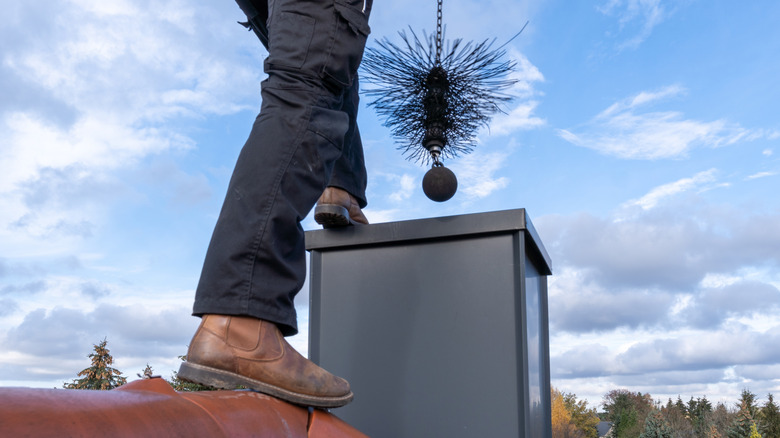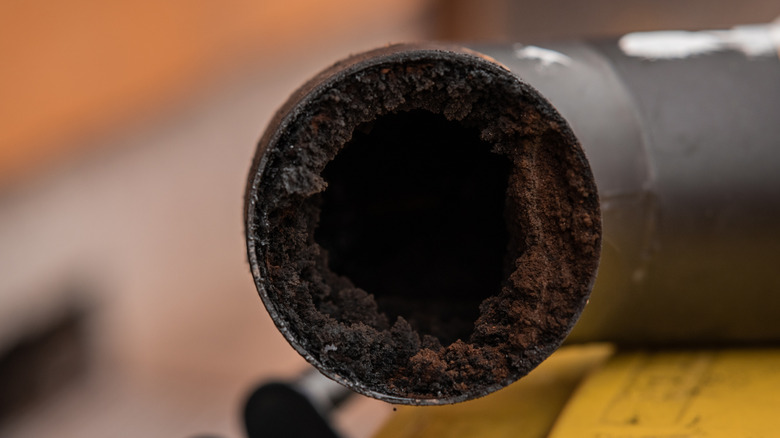The Toxic Substance In Your Chimney That You Need To Know About
Having a fireplace in your home can be an absolute luxury during the colder months, but it's also a huge responsibility that comes with a certain level of regular maintenance. Having a wood-burning fireplace requires a lot more manual effort than one might think. On top of this, the chimney of your fireplace can get a buildup of a toxic substance over time.
This substance is known as creosote and is a natural byproduct of burning firewood. This substance develops as the heat from the fire causes cellulose in burning wood to break down and can look somewhat different depending on its current stage. In the first stage, when creosote is fresh, it looks like soot and appears as a black dust. In the second stage, it gains a flaky or chunky appearance, and could be sticky as well. In the third stage, when it develops further, it may become more like a thick tar — and by that point, you'll need a chimney intervention.
Creosote is flammable, toxic to breathe, and can emit an unpleasant odor that you'll want to know how to remove. Skin irritation, eye irritation, and respiratory issues are all signs and symptoms of creosote damage. The substance can lead to safety issues and cause fires. Even though it's a naturally occuring material, it needs to be dealt with as long as it's inside your home. If you're a fireplace owner, you should have a plan for clearing out the creosote in your chimney from time to time.
How to get rid of creosote in your chimney
Having a bit of creosote in your chimney is unpreventable and may not be a big deal. Some buildup is natural and only becomes a problem if you let it get out of hand. It's typically recommended that you get creosote removed by professionals because it can be so toxic and unsafe to deal with. Professionals know how to remove it in the safest way possible. However, if using extreme caution, you can remove creosote from the chimney and fireplace yourself.
If you take on this task on your own, it's important to wear protective gear such as safety goggles, a respirator mask, gloves, pants, and long-sleeved clothing. Ensure that you have adequate ventilation to avoid breathing in any toxic air. You can use a chemical creosote removal solution or create a homemade creosote remover by combining equal amounts of dish soap and salt and then adding it to half a cup of ammonia to make a paste. Apply this mixture to the fireplace and cover the creosote-ridden areas, letting it sit for 15 minutes.
If the creosote is thick, you may want to extend this length of time to 30 or 45 minutes. After this, use a stiff brush or steel wool to scrub the paste away with a circular pattern — the creosote should come off with it. Then rinse the area with water using a spray bottle and dry the fireplace with towels to wipe away any paste or creosote that remains. And remember to schedule a chimney cleaning once a year.

